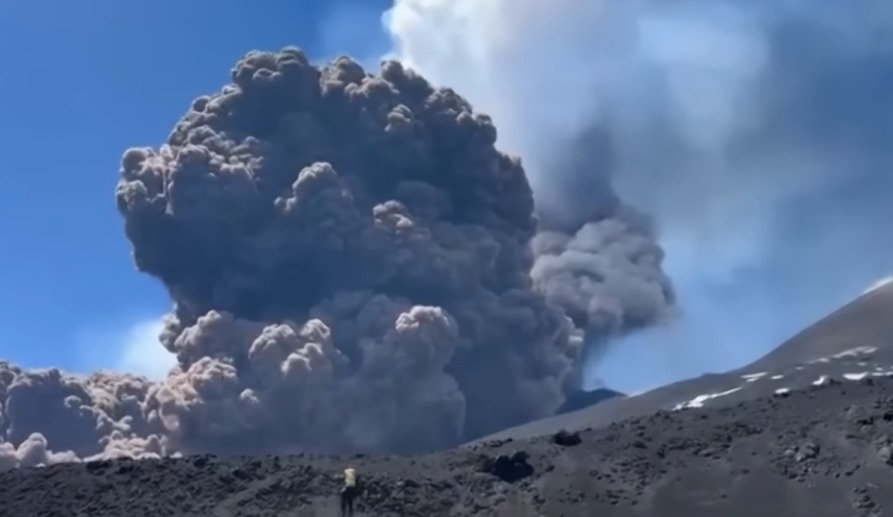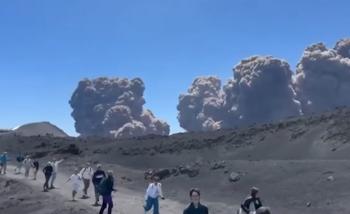Mount Etna Awakens with Fiery Spectacle as Ash and Smoke Tower Over Sicily
One of the world's most active volcanoes roars to life again, showcasing nature’s raw power without disrupting daily life
A Dramatic Dawn on Sicily’s Skyline
Italy’s iconic Mount Etna stirred once more in the early hours of Monday morning, treating Sicily to a mesmerizing yet formidable natural display. Towering columns of smoke and ash pierced the sky as molten material spilled from the southeastern edge of the volcano—an area geologists have long identified as a hotbed of volcanic activity.
While Etna is no stranger to eruptions, each event is a reminder of the island's dynamic geological underpinnings. This eruption, characterized by a series of increasingly intense explosions, was both visually stunning and geologically significant.
Pyroclastic Flows Surge Down the Slopes
As the sun rose over the Mediterranean, video footage and eyewitness accounts captured a breathtaking sight: a fast-moving pyroclastic flow—a deadly cocktail of gas, ash, and rock—barreling down the volcano’s flank. These flows, known for their speed and destructive potential, are often among the most feared phenomena in volcanic activity.
Geologists believe this surge may have been triggered by a partial collapse of Etna’s crater. Such structural shifts can violently displace volcanic material, resulting in flows capable of scouring the mountainside at tremendous speed. Fortunately, this particular flow remained confined within a familiar path, stopping before reaching the Valley of the Lion, the final destination for most guided excursions to the summit.
No Immediate Threat to Residents or Air Travel
Despite the eruption’s dramatic visuals, disruption on the ground has been minimal. Flights continued arriving and departing from Sicily’s airports without delay, and there have been no reports of injuries or property damage. Local authorities and volcano monitoring teams remain on alert, but the event has so far posed no immediate danger to nearby communities.
This relative calm amid the eruption speaks to Mount Etna’s unique nature. Unlike many volcanoes that lie dormant for centuries before a cataclysmic event, Etna releases its pressure through frequent, smaller eruptions. These regular bursts allow scientists to monitor changes in activity closely, giving residents a better chance of staying safe.
The Science Behind the Spectacle
Located on the convergence of the African and Eurasian tectonic plates, Mount Etna is a geological marvel. Its southeastern crater—the site of this latest eruption—is particularly active and has been the source of several recent outbursts. The vent, approximately 200 meters wide, offers a predictable outlet for magma, reducing the risk of more destructive surprises elsewhere on the volcano.
Experts at the Etna Observatory continue to track seismic shifts and ground deformation around the volcano. These movements, while subtle, often signal the buildup of underground pressure that precedes an eruption. The data collected from such events is invaluable in understanding the behavior of one of the world's most studied volcanoes.
A Living Landmark with a Fiery Heart
Mount Etna is more than just a natural hazard—it’s a central part of Sicily’s identity. For millennia, it has shaped the island’s landscape, culture, and folklore. Its fertile volcanic soil supports thriving vineyards and farms, while its dramatic silhouette draws adventurers and scientists from around the globe.
While eruptions like this one serve as reminders of the volcano’s power, they also highlight the intricate dance between human life and the natural world. In Sicily, that dance is eternal—and Etna, ever watchful, ever rumbling, continues to lead.
Stay informed with updates from local geological monitoring teams and follow safety guidelines when visiting volcanic regions. Mount Etna’s activity is a marvel to witness, but always with a respectful eye on its immense power.

